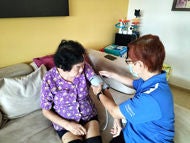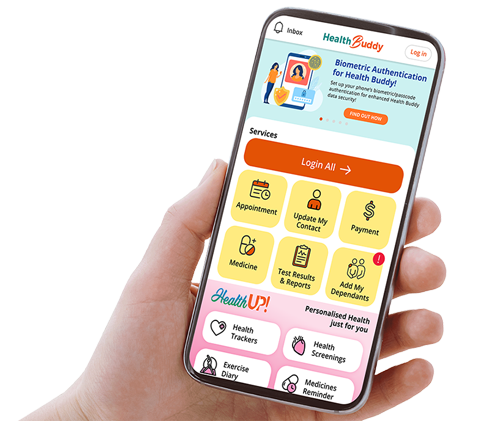What is - Dysmenorrhoea and Endometriosis
Dysmenorrhoea is defined as painful menses and is reported by up to 50-90% of women.
It is described as primary dysmenorrhoea if no underlying cause of the pain is found and the reproductive organs and pelvis are seemingly normal. This appears to be more common in younger women and tends to resolve with increasing age.
Other risk factors include BMI <20 kg/m2, smoking, menarche before age 12, longer cycles and longer duration of bleeding, irregular or heavy flow, and a history of sexual assault.
Secondary dysmenorrhoea is menses pain where an underlying condition causing the pain is found by your doctor. For example this may be endometriosis, adenomyosis, fibroids or pelvic infection. The most common cause of secondary dysmenorrhoea is endometriosis.
Endometriosis
Endometriosis is a common condition affecting around 8 percent of the female population.
It is caused by the lining of the womb (endometrium) appearing in other places in the body. Most commonly, endometriosis occurs inside the pelvic area and attaches to the ovaries, the ligaments behind the womb, the tissue layer lining the pelvis, the bladder and ureters or the intestine.
Endometriosis can occur in minimal amounts (Stage 1) through to severe amounts (Stage 4). The cause of endometriosis is still unknown. Adenomyosis is endometriosis in the muscle layer of the womb itself.
Symptoms of Dysmenorrhoea and Endometriosis
Endometriosis may cause pelvic pain or infertility although many women with endometriosis have neither problem. Having more endometriosis does not mean you will have more pain, as women with only a minimal amount can have more pain than women with severe disease.
Pelvic pain in endometriosis is mostly associated with menses and occurs on a monthly basis. However, other significant symptoms may be:
- Pain felt deep inside the vagina during or after sexual intercourse
- Pain felt during passing of motion
These also tend to be worse during menses. Pain can also occur throughout the month and may then be described as chronic pelvic pain.
Although it is normal to have some discomfort during menses, it is not normal to have pain that is not relieved by simple painkillers or if it forces you to take time off work or miss social events. These may suggest that you have endometriosis and should seek medical help.
Rarer forms of endometriosis
In more rare cases, you may have bleeding from the back passage or bleeding when you pass urine during menses, suggesting that endometriosis is affecting the rectum or bladder.
Cyclical pain during menses in an old operation scar (e.g. caesarean section scar) may suggest that there is endometriosis in it. Coughing up blood during your menses may indicate lung endometriosis.
Is endometriosis linked with fertility problems?
When we look at women who are struggling to become pregnant, we find that a greater number of them have endometriosis than we would expect to find in the general population showing a link between endometriosis and infertility but this is poorly understood.
Diagnosis of Dysmenorrhoea and Endometriosis
The average age of onset of pain symptoms in endometriosis is 20 years old but the average age of diagnosis is 28. This is because many women ignore the pain symptoms because they think it must be normal and do not wish to appear as if they are complaining or doctors dismiss their complaints too easily.
Your gynaecologist may suspect you have endometriosis after asking about your symptoms. Normally they will arrange for you to have an ultrasound scan which can diagnose endometriotic cysts in ovaries. An expert endometriosis scanner can detect severe endometriosis in other areas also.
However, minimal to mild endometriosis cannot be detected by any test or scan. The only way to diagnose it is to undergo a diagnostic laparoscopy (keyhole surgery) under general anaesthetic and to see it directly. A gynaecologist who specialises in endometriosis would then aim to remove all visible endometriosis at the same time.
If your doctor suspects or finds you to have more severe disease affecting the bowels, bladder or ureters, you may need further specialist tests to assess the problem before it is removed.
Treatment for Dysmenorrhoea and Endometriosis
Treatment and impact on fertility
It is crucial that your endometriosis treatment is tailored to your own specific circumstances and that you see a specialist in endometriosis who can advise you on this. Your treatment will depend upon your age, desire for a diagnosis, fertility requirements and pain symptoms.
Do not just accept the first treatment offered without understanding why it is being offered in your situation. A consultation for complex endometriosis will take at least 45 minutes.
Pain
There is no absolute cure for endometriosis and it tends to be an issue that remains with you for most of your fertile years.
Both medical and surgical treatments give a measure of relief from pain depending on the type of endometriosis you have. The amount of pain relief can vary greatly depending on many factors. Pain can recur after stopping medical treatments or at a later date after surgery.
If you are not keen to have a diagnostic laparoscopy (keyhole surgery) to confirm that you have endometriosis, then it may be reasonable to try medical treatments first and then consider a diagnostic laparoscopy later if the medical treatments do not work.
Medical treatments
All of the hormonal treatments have been shown to be equally effective as each other at relieving pain but none of them improve fertility. The choice of drug treatment is decided by your age, requirement for birth control and the potential side effects of the drugs.
- Simple painkillers may be used. However, most women have already tried these before they see a gynaecologist.
- Hormonal drugs can be used to mimic the hormone levels found in pregnancy as we know that endometriosis pain tends to improve during pregnancy. Your doctor may prescribe oral oestrogen and progesterone combined, progesterone only medication, or a progesterone impregnated coil that fits inside the womb.
- You can also take hormone drugs to temporarily mimic menopause as we know that endometriosis tends to resolve once the menses have stopped. This is generally done by injections that temporarily switch off the ovaries during the treatment period. Your menses will return after the treatment is stopped without risk to your fertility. However, these drugs cannot be used long-term in most cases.
Surgical treatment
Some women may decide to proceed directly to a diagnostic laparoscopy because they wish to be certain if they do have endometriosis. Knowing the cause of the problem helps them psychologically to deal with it.
Surgical treatment requires the help of a gynaecologist who specialises in endometriosis and minimally invasive surgery (keyhole surgery).
For minimal to moderate disease (Stage 1-3), the surgeon should be comfortable to diagnose the problem during laparoscopy and surgically remove it, preferably by excision, and at the same time, to get the best chance of pain relief. Many general gynaecologists are not fully trained in these techniques.
If your gynaecologist discovers severe disease then, to treat it at the same time, they should have discussed with you the pros and cons of surgical removal. In severe cases, endometriosis surgery is a high-risk complex operation that should only be attempted by a fully-trained expert in specialist centres.
Not everyone requires surgical removal of severe disease as it can compromise your fertility. Robotic keyhole surgery now potentially offers the most accurate and precise surgery for severe cases of endometriosis with the lowest risks of complications. About 80 percent of patients undergoing surgery say that their pain improves to varying extents.
Your gynaecologist should also be able to offer you access to other specialists as required, for example:
• Pain, intestinal or urinary system specialists
• Psychological and psycho-sexual support
Fertility
If you are found to have endometriosisassociated infertility then the choice is whether to have surgery or assisted fertility treatments (IVF or IUI) or both.
With minimal to moderate endometriosis, there is evidence that surgically removing the endometriosis deposits and endometriotic ovarian cysts improves your chances of conceiving spontaneously reducing the need for assisted conception techniques.
There is some evidence that surgically removing severe endometriosis before infertility treatment improves your chances of success. However, there is a small risk of damaging your fertility with surgery in some cases and so assisted conception techniques may be recommended in the first instance so as not to risk affecting your fertility further from surgical complications.
Surgery may also be needed first if:
- The pain is so severe that it is the major problem, rather than the fertility issue.
- You have large endometriotic cysts on the ovaries that are interfering with the infertility specialist’s ability to collect eggs for IVF.
Dysmenorrhoea and endometriosis can be physically and mentally debilitating, affecting every aspect of a woman’s life.
Women with endometriosis tend to have more problems maintaining their careers and relationships as they may be fighting with chronic pain and fertility issues.
Seeing a gynaecologist who specialises in this area gives a good opportunity to keep the pain under control and achieve fertility aspirations.
Contributed by
The information provided is not intended as medical advice. Terms of use. Information provided by SingHealth.
Condition Treated At
Department
Obstetrics & Gynaecology
Department
Obstetrics and Gynaecology (O&G) Centre
Get to know our doctors at SingHealth Hospitals in Singapore.
Get to know our doctors at SingHealth Hospitals in Singapore. here.




















